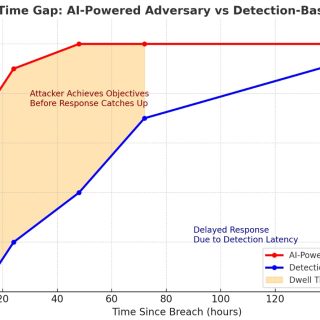
In the world of cybersecurity, every day brings new challenges and potential threats. However, some vulnerabilities stand out due to their sheer scale and potential impact. One such issue has recently come to light with CrowdStrike, a well-known name in endpoint protection.
Watch this Video explaining CrowdStrike catastrophe from 7:15 onward:
The Flawed Architecture
CrowdStrike’s product architecture has been revealed to be fundamentally flawed. This isn’t a simple oversight; the entire design appears intended to bypass the security measures that EV Code Signing certificates are supposed to enforce. This means unverified content can be executed at the kernel level, which is a massive security risk.
Direct Quotes from the Video
– “Unsigned code of unknown provenance running in full kernel mode”
– “Executing untrusted PE code in the Kernel is risky business at best and could be asking for trouble”
The Legal Responsibility of CISOs and IT Managers
As a Chief Information Security Officer (CISO) or IT Manager, the responsibility to safeguard your enterprise’s digital infrastructure is paramount. Ignoring such a glaring vulnerability and continuing to use the affected product could lead to severe repercussions, including data breaches, system failures, and significant financial losses. Moreover, there are legal implications to consider.
Regulatory Requirements
With the increasing emphasis on cybersecurity, regulations have become more stringent. The U.S. Securities and Exchange Commission (SEC) has implemented new rules that require public companies to report material cybersecurity incidents within four days. This tight timeline places immense pressure on CISOs to report incidents quickly, even before fully understanding the situation. Failing to comply with these regulations can lead to significant legal and financial consequences.
Personal Liability for CISOs
Recent legal cases highlight the personal risks CISOs face. For example, Joseph Sullivan, the former Chief Security Officer at Uber, was criminally charged for actions taken after a data breach. Similarly, Timothy Brown, the former CISO of SolarWinds, faced financial penalties related to the company’s cyber incidents. These cases illustrate that CISOs can be held personally liable for failing to adequately manage and disclose cybersecurity risks.
Known Vulnerabilities as Material Cybersecurity Incidents
Knowing that you have a known vulnerability in your systems can be considered a material cybersecurity incident if it meets certain criteria. Specifically, if the known vulnerability:
– Poses a significant risk to the confidentiality, integrity, or availability of critical data or systems.
– Could lead to unauthorized access to sensitive information, resulting in data breaches.
– Might cause substantial financial loss or operational disruption if exploited.
– Has the potential to damage the company’s reputation or trust with customers, partners, or stakeholders.
– Results in legal or regulatory implications, including the possibility of fines, sanctions, or mandatory disclosure requirements.
In the context of CrowdStrike’s architectural flaw, the presence of such a significant vulnerability clearly meets these criteria. The ability for unverified content to be executed at the kernel level poses a severe risk to data integrity and system availability. Unauthorized access facilitated by this flaw could lead to data breaches, substantial financial losses, and operational disruptions. Additionally, the damage to the company’s reputation and trust with stakeholders could be immense. Given these factors, it is imperative that CISOs consider whether the use of CrowdStrike’s flawed architecture constitutes a material cybersecurity incident. Reporting this vulnerability could be necessary to comply with regulatory requirements and to ensure transparency with stakeholders about the potential risks involved.
Should CISOs be Reporting Using CrowdStrike as a Material Cybersecurity Incident because of its Flawed Architecture?
In such cases, the existence of the vulnerability and the steps being taken to mitigate it may need to be disclosed to ensure transparency and inform stakeholders of the potential risk. Given the significant risks associated with the flawed architecture of CrowdStrike’s product, CISOs should seriously consider whether the use of this product constitutes a material cybersecurity incident that needs to be reported.
In conclusion, while no security solution is perfect, some flaws are too dangerous to ignore. The CrowdStrike catastrophe is a stark reminder that even trusted products can have significant vulnerabilities. As security professionals, it is crucial to remain vigilant and proactive in protecting our enterprises. Ignoring this issue not only puts your organization at risk but could also place you in legal peril.
By addressing these vulnerabilities and complying with regulatory requirements, CISOs and IT Managers can better safeguard their organizations and avoid potential legal consequences.



